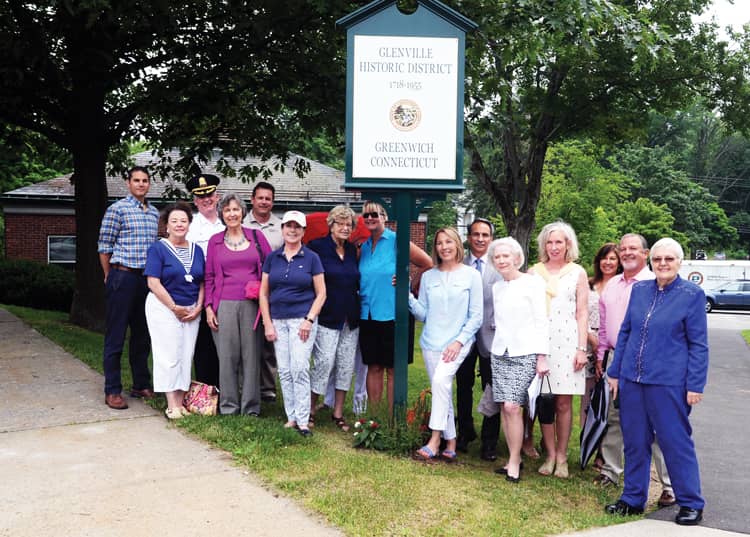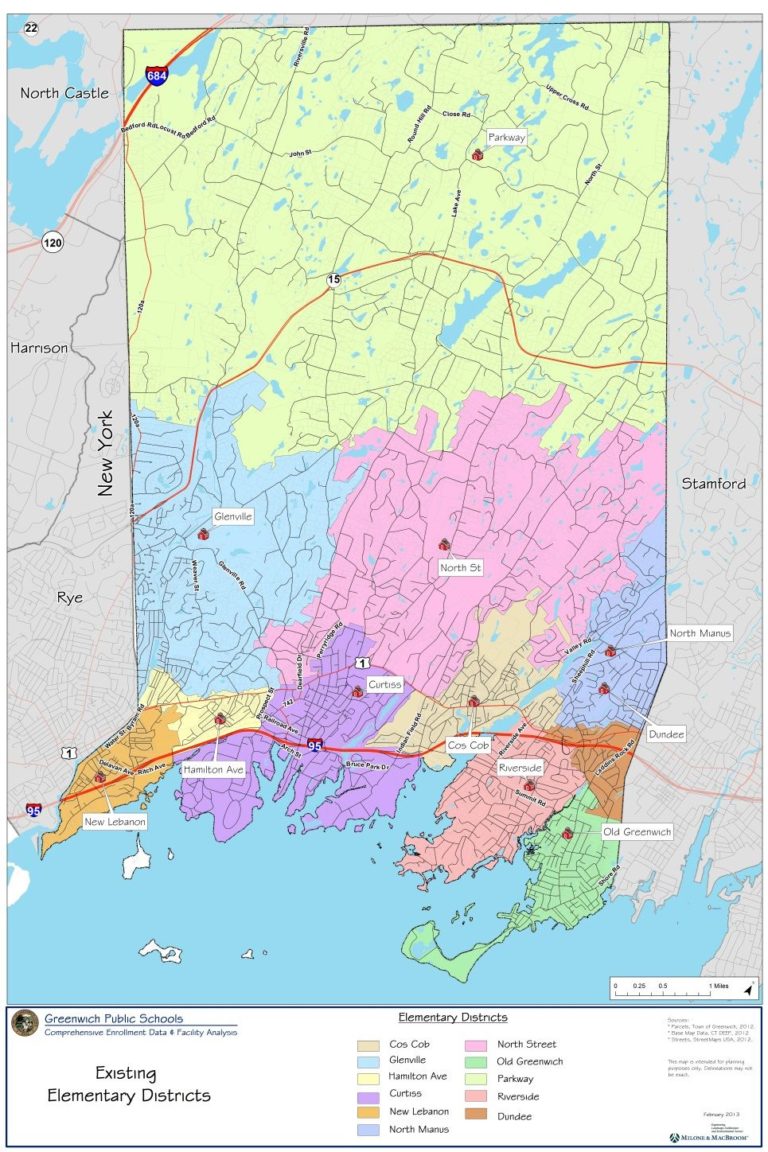

By Mike Verrico
History is all around us, yet throughout the course of our busy lives, it’s very easy to not appreciate the past, let alone what is occurring in the world or our own country.
In an era where, according to Joe Concha of the Hill, only 43 percent of U.S. voters can name a United States Supreme Court Justice, it’s so important and special to take the time and appreciate what has occurred in the past.
With that in mind, a small yet enthusiastic group of elected officials (Board Selectman John Toner and Greenwich Police Chief James Heavey), historic preservationists, Glenville residents, business owners and those from the Greenwich Historical Society and the Greenwich Preservation Network came together last Friday to celebrate a new historical district marker just east of the Glenville Fire Department.
“It’s meaningful so when drivers see the sign, they might want to slow down and see the district, and notice what they may pass by every day and appreciate what makes the district special,” said Heavey during Friday’s event.
The Glenville Historic District joined the National Register of Historic Places in 2007. It is a primary example of a New England mill village, starting with a sawmill built in 1717 and a grist mill in 1718 conceived by Josiah Quimby in the area then known as Sherwood’s Bridge. The name “Glenville” (for the area’s valley or glen) first appeared in print, in the name of the Glenville Manufacturing Company, in 1848. It’s a comprehensive example of a New England mill village within the Town of Greenwich.
It is also historically significant as one of the town’s major staging areas of immigrants, predominantly Irish in the 19th century and Polish in the 20th century and remained the primary settlement of Poles in the town.
With water power provided by the Byram River, the mill complex grew over time and morphed to manufacture wool and lead products before becoming America’s first and biggest woven felt manufacturer in 1852, under the ownership of the American Felt Company.
In 1978, Greenwich Associates transformed the mill complex into office space and condominiums in a sensitive redevelopment that precipitated Glenville’s second wave of gentrification, as Glenville morphed from a remote factory town into an up-and-coming suburban community.
The Glenville Historic District is architecturally significant because it contains two elaborate examples of mill construction — a transitional Stick-style/Queen Anne (the 1879 Depot Building, located on 334 Pemberwick Rd.) building and a Romanesque Revival (the 1881 New Mill, located on 340 Pemberwick Rd.) structure; an excellent example of a Georgian Revival school (the 1920 Glenville School, located on 449 Pemberwick Rd.) that is now the Western Greenwich Civic Center; and notable examples of domestic, commercial, and municipal architecture, including a Queen Anne mansion (the 1886 Superintendent’s Mansion, 6 Glenville St.) and the 1950 modified Georgian Revival Glenville Firehouse (266 Glenville Rd.).
For a property to be eligible for the National Register, it must meet at least one of the four National Register main criteria. Information about architect styles, association with various aspects of social history and commerce, and ownership are all integral parts of the nomination.
Each nomination contains a narrative section that provides a detailed physical description of the property and justifies why it’s significant historically with regard either to local, state or national history.
The first criteria demands that the property must have an Event, in that the property must make a contribution to the major pattern of American history. The second criteria is that it must have a Person who is associated with significant people of the American past.
The third criteria is that it must have Design/Construction significance which concerns the distinctive characteristics of the building by its architecture and construction, including having great artistic value or being the work of a master. The fourth and final criteria is that is a property must have or contain Information potential that is satisfied if the property has yielded or may be likely to yield information important to prehistory or history.
The historic marker itself reads Glenville Historic District 1718-1955 Greenwich Connecticut and was made possible by Sound View Engineers and Land Surveyors, LLC is a sponsor of the marker; Charles Hilton Architects donated the design and Cornerstone Contracting donated its services to install the marker.
To most, the dates may seem random but of course that is not the case.
As told by Debra Mecky, Executive Director of the Greenwich Historical Society, “The date of 1718 was chosen, when Josiah Quimby from Westchester County was granted permission by the town of Greenwich to build a grist mill where the district now stands adjacent to the Byram River. The mill he built would be the basis of the factory complex. The end date of 1955 was chosen as the Glenville district matured, in that the Glenville Volunteer Fire Department was built in 1950 and the footbridge was replaced over the Byram River.”
For local residents at the dedication, it was a source of great pride and recognition.
For Gail Kochan, a 50-year resident of Glenville, it’s a source of great pride to see a tasteful sign and commemorate how much has occurred in the town she lives in and how people can enjoy the beauty in her town of Glenville.




